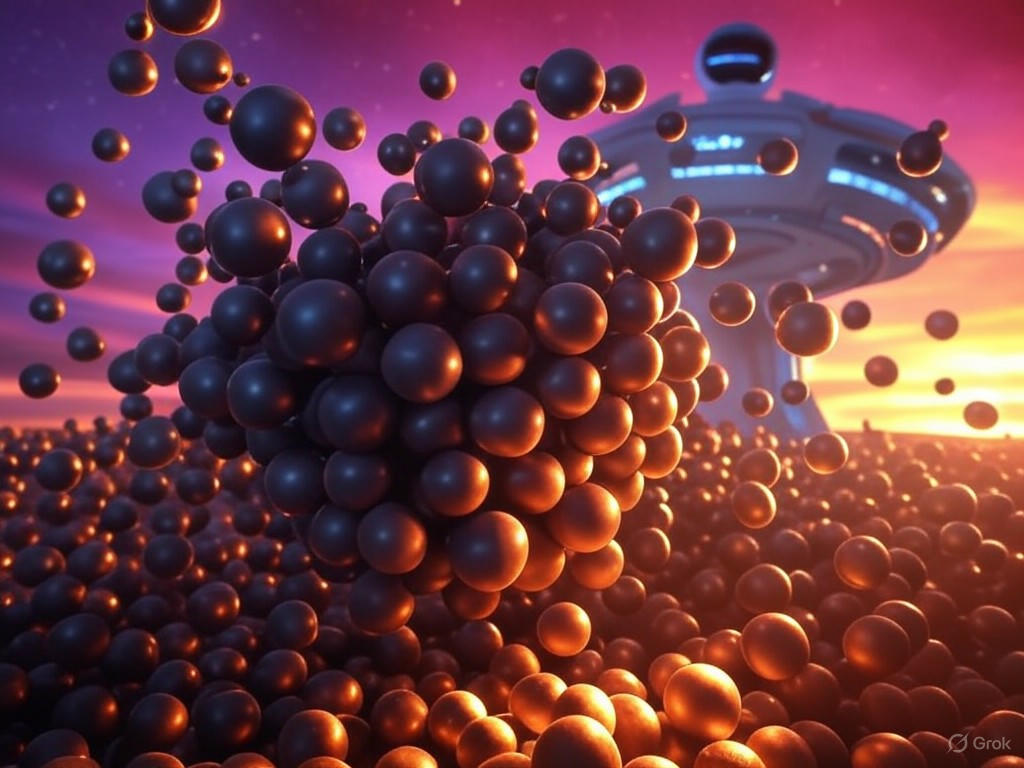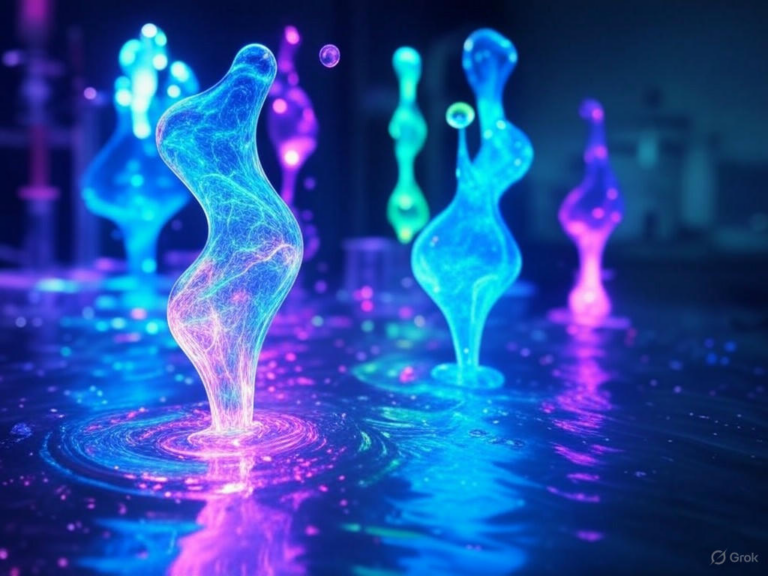
First Photos of Atoms Interacting in Free Space
Unveiling the Quantum World: Historic Imaging Breakthrough
Have you ever paused to imagine the invisible world of atoms, those tiny building blocks that form everything around us? Atoms interacting in free space have long been a theoretical concept, elusive and abstract, but now, thanks to innovative work by MIT physicists and the Harvard Center for Ultracold Atoms, we’re seeing it for the first time. This breakthrough captures the first-ever images of individual atoms freely interacting, shattering barriers in quantum physics and bringing once-hidden behaviors into sharp focus.
Picture this: atoms, millions of times smaller than a grain of sand, dancing in open space without any walls or constraints. The achievement doesn’t just validate decades of theory; it opens doors to new discoveries in quantum mechanics. As atoms interacting in free space become visible, we gain insights into the fundamental forces shaping our universe, from everyday materials to cutting-edge technologies. You can view the images here: MIT physicists snap the first images of “free-range” atoms | MIT News | Massachusetts Institute of Technology
The Challenge of Imaging Atoms Interacting in Free Space
Getting a clear shot of atoms at play is no simple task. These particles are incredibly small—around one-tenth of a nanometer—and their interactions happen in fleeting moments that classical tools can’t catch. Scientists have always relied on indirect methods, like mathematical models or particle collisions, to infer what’s going on.
But what if we could freeze that moment? That’s exactly what the team did, turning theory into reality. By capturing atoms interacting in free space, they’ve provided a visual roadmap for understanding quantum phenomena, making complex ideas more relatable and sparking curiosity in anyone fascinated by the microscopic world.
The Quantum Microscope: A Game-Changer in Free-Space Atomic Imaging
At the heart of this discovery is a custom-built quantum microscope, a device that feels straight out of science fiction. It allows researchers to observe atoms in their natural state without disturbing them too much. First, they create a cloud of atoms and let them interact freely, mimicking real-world conditions.
Then, an optical lattice—a grid of laser light—steps in to hold everything in place, like pausing a fast-forward video. Finally, specialized cooling lasers illuminate the scene, capturing high-resolution images. This method not only freezes atoms interacting in free space but also preserves their quantum properties, giving us a glimpse into behaviors that were purely hypothetical until now.
Ever wondered how this could apply beyond the lab? Think about designing better batteries or medicines by understanding atomic-level interactions firsthand.
Bosons and Fermions: Quantum Families in Free-Space Action
Atoms aren’t all the same; they fall into two main categories: bosons and fermions, each with their own quirky rules. The new images bring these differences to life, showing how bosons cluster together like friends at a party, while fermions keep their distance, avoiding overlaps.
This visualization of atoms interacting in free space highlights the social dynamics of quantum particles, offering a fresh way to teach and learn about physics. It’s like watching a microscopic drama unfold, where bosons huddle for warmth and fermions guard their personal space.
| Particle Type | Quantum Behavior | Visual Result in Images |
|---|---|---|
| Bosons | Can share the same state; highly cooperative | Form tight clusters, demonstrating their sociable nature |
| Fermions | Follow the Pauli exclusion principle; inherently independent | Create empty zones around each other, known as Fermi holes |
Bose-Einstein Condensate: Witnessing a Quantum Wonder in Free Space
When bosons like sodium-23 atoms are chilled to near absolute zero, they form a Bose-Einstein condensate (BEC), a state where they all move in sync. The images from MIT reveal this phenomenon in stunning detail, showing clusters that confirm long-standing theories.
It’s a bit like turning a group of individuals into a single, flowing entity—what if we could apply this principle to improve energy-efficient technologies? Seeing atoms interacting in free space in a BEC state not only validates predictions but also inspires new experiments, potentially leading to breakthroughs in superconductivity.
Fermi Gases: The Evidence of Atomic Interactions in Open Environments
Fermions, such as lithium-6, are the introverts of the quantum world, adhering to rules that prevent them from occupying the same space. These images expose the “Fermi holes” around each atom, proving the exclusion principle visually and highlighting how free-space atomic interactions drive complex systems.
In strongly interacting Fermi mixtures, we even see pairs forming, which could unlock secrets behind everyday phenomena like magnetism or advanced materials. Imagine using this knowledge to engineer superconductors that work at room temperature—now that’s a game-changer.
Mastering the Technique for Observing Atoms Interacting in Free Space
The imaging protocol is a clever blend of precision and speed, projecting atoms from continuous space into a structured lattice with over 99% accuracy. This isn’t just photography; it’s a digital snapshot of quantum wave functions, capturing interactions in their purest form.
- Start with atoms floating freely, unconfined and natural.
- Activate the optical lattice to trap them instantly, like hitting the pause button.
- Use advanced lasers to image everything before the moment slips away.
This versatile approach could revolutionize studies of many-body quantum systems, making atoms interacting in free space a key to solving real-world problems in materials science.
Why Capturing Atoms Interacting in Free Space Matters
The ability to directly observe these interactions has ripple effects across science and technology. From validating quantum theories to inspiring new innovations, this breakthrough is a cornerstone for future advancements.
For instance, understanding how atoms behave could lead to designing stronger, lighter materials or even quantum computers that process information at lightning speeds. It’s not just about science; it’s about making the quantum world work for us.
Key Benefits and Future Impacts of Free-Space Atomic Imaging
- Direct Visualization of Quantum Phenomena: Seeing theories in action helps refine models and predict new behaviors, like how atoms interacting in free space influence energy states.
- Material Science Advances: This insight could speed up the creation of quantum computers or advanced semiconductors, tackling challenges in computing and electronics.
- Education and Engagement: With real images, quantum concepts become tangible—try explaining this to a student and watch their eyes light up with possibilities.
- Exploring Exotic States: From superfluids to high-temperature superconductors, this technique opens paths to study phenomena that defy current computations.
Frequently Asked Questions on Atoms Interacting in Free Space
- How small are the atoms we’re now imaging?
Each atom is about one-tenth of a nanometer, requiring cutting-edge tools like the quantum microscope to resolve atoms interacting in free space clearly. - Could this extend to molecules?
While it’s focused on atoms today, the protocol’s adaptability hints at future applications for simple molecules, expanding our view of quantum interactions. - What tech might emerge from this?
Absolutely—it could drive progress in quantum computing, precise sensors, and materials that change how we build everything from phones to medical devices. - Who’s behind this milestone?
Professor Martin Zwierlein at MIT led the charge, working with the Harvard Center for Ultracold Atoms to capture these groundbreaking images.
Conclusion: Embracing a New Era of Quantum Visualization
As we’ve explored, the first images of atoms interacting in free space mark a pivotal shift in physics, turning abstract ideas into vivid reality. This achievement by MIT and Harvard not only deepens our understanding but also paves the way for practical applications that could transform industries.
So, what do you think—could this lead to the next big tech revolution? Share your thoughts in the comments, explore more on quantum topics, or check out related articles on our site. Let’s keep the conversation going and inspire the next generation of scientists.
References
1. ZME Science. “Scientists have taken the first-ever photos of atoms interacting in free space.” Link
2. Science Springs. “From the School of Science at MIT: Physicists snap the first images of free-range atoms.” Link
3. Life Technology. “MIT physicists capture first images of individual atoms interacting.” Link
4. Phys.org. “Protocol to image functions in space.” Link
5. Inshorts. “First images of atoms interacting in free space released.” Link
atoms interacting in free space, quantum microscope, Bose-Einstein condensate, MIT physicists, atomic interactions, free space imaging, quantum phenomena, ultracold atoms, particle interactions, quantum physics breakthrough







